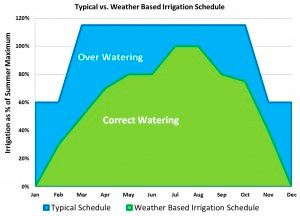Water Conservation

Indoor Water Saving Tips
There are many easy changes that you can make that will drastically reduce the amount of water that you use. Here are some simple steps that you can take around your house to conserve water.
IN THE KITCHEN
- Only use the dishwasher for full loads.
- Don’t wash dishes under continuous running water. Fill one side of the sink with clean water for rinsing and use the other side for washing, or put washed dishes in a rack and rinse them all at once.
- Wash vegetables in a pan of water instead of under a running faucet. Re-use that water to water household plants.
- Don’t use in-sink garbage disposals, which require a lot of water for operation. Instead, dispose of food waste in a compost pile.
- Check faucets and pipes for leaks. Even a small drip from a worn washer can waste 20 gallons of water a day, while larger leaks can waste even more.
- Install faucet aerators, which are inexpensive devices that can reduce water usage by up to 60%.
IN THE BATHROOM
- Turn off the faucet while brushing your teeth or shaving. Fill the sink to shave instead of letting the water run.
- Check toilets for leaks. Add about 12 drops of food coloring or a leak-detection tablet, into the tank. If color appears in the bowl an hour later, then there is a leak.
- Install a toilet displacement device in the toilet tank. Place a plastic bottle, weighted with water or sand, into the tank, making sure that it doesn’t interfere with the flushing mechanism. Don’t use a brick/stone, which may chip.
- If you are buying a new toilet, select a low-flush model that uses less than 1.5 gallons of water per flush.
- Take shorter showers. Install a water-saving showerhead, which can cut water usage in the shower from 5–7 gallons per minute to just 3 gallons per minute.
WHEN DOING LAUNDRY:
- Only run the washing machine for full loads.
- When buying a new washing machine, buy one that can be adjusted to load size and has a “suds-saving” option.
Outdoor Water Saving Tips
You can save water by adjusting landscape watering schedules in response to seasonal changes.

Evapotranspiration (ET) is the sum of evaporation and plat transpiration from the Earth’s surface to the atmosphere. Evaporation accounts for the movement of water to the air from sources such as the soil, canopy interception, and waterbodies.

The California Irrigation Management Information System, or CIMIS, is a network of 140 automated weather stations statewide that provide data that can be used to regulate landscape and agricultural watering systems. The Joshua Tree station came on line in December 2011 and generates information that lets you use your existing irrigation controller to schedule irrigation using the same information used by smart controllers.
Our CIMIS station records real-time temperature, precipitation, humidity, solar radiation, soil temperature, and wind conditions on the ground. The purpose of this program is to reduce landscape water waste with the added bonus of providing educational data for schools and research institutions, air resource monitoring, and more. Anyone can access the information via the internet by signing up for a free account at www.cimis.water.ca.gov. Go to the data tab and select station #233 for daily, weekly, or monthly reports and even have them delivered to your email address!
Smart Irrigation Controllers/ET Controllers: ET controllers are irrigation controllers which use weather based information to adjustment irrigation automatically throughout the year. These adjusting methods include use of historical ET, on-site sensors, or subscription services to track ET.
Our JBWD Demonstration Garden: The silver box to the left of the gate as you enter the gardens houses a smart controller, also known as an ET controller. ET stands for Evapotranspiration Rate, which is the amount of water used by plants and evaporated from the soil and leaf surface. Smart controllers make irrigation systems truly automatic by replacing the water used by plants each day depending on temperature, humidity, sunlight, and wind.
Our controller uses local ET data and an on-site weather sensor to apply only the water needed by the plants which are divided into hydrozones. If you haven’t mixed thirsty plants with your drought tolerant plants, this might be the way to eliminate the headache of changing the irrigation schedule throughout the year.
